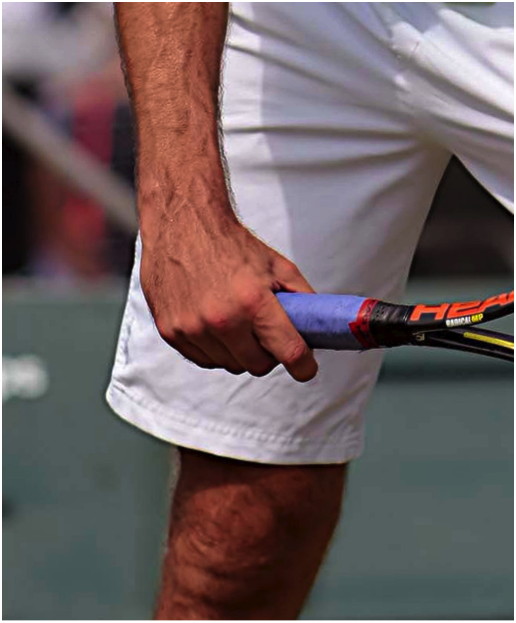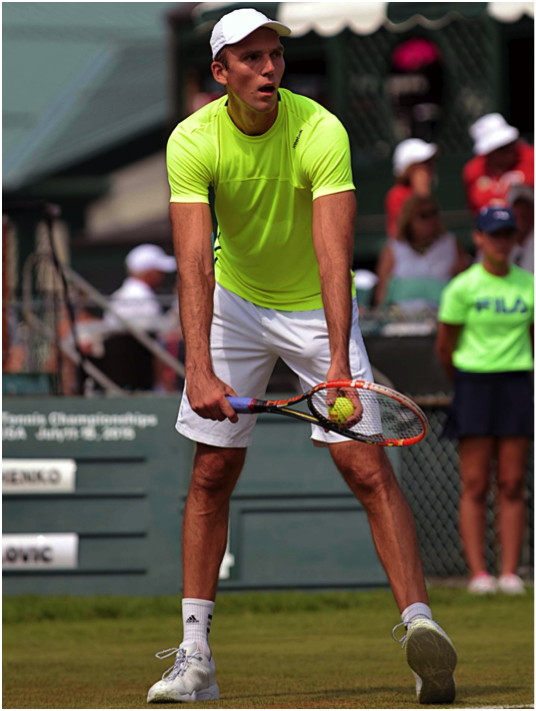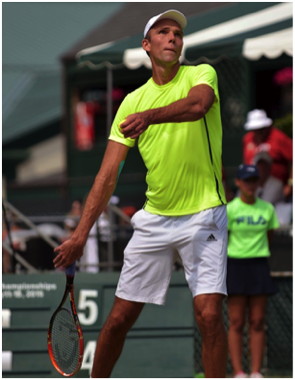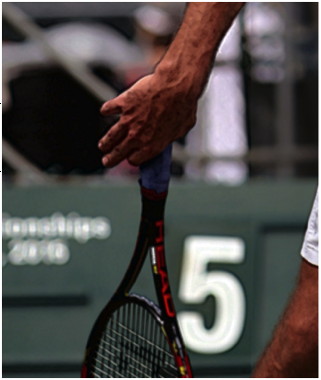August 2015 Article Turbo Tennis Archives:
Tennis Server
|

 |
Ivo Karlovic's Powerful Serve!!!
For the past decade, I have traveled up to the Tennis Hall of Fame Championships to photograph. I am a credentialed photographer, and sell my images primarily to European outlets. I have had the pleasure of photographing many ATP pros at this "Mini-Wimbledon" event that is played on grass. Not surprisingly, there are many pros who have big serves that elect to play this great tournament. After his success at Wimbledon, I was very eager to see Ivo Karlovic play at Newport.
There are various schools of thought about what is a proper toss. Some recommend a low toss, where wind and other elements cannot move the ball around. The service motion associated with a low toss is by necessity very economical. Having seen videos of Roscoe Tanner when he played professionally, I can say that his is the lowest toss that I have ever seen. Roscoe is a lefty and had one of the biggest serves on the tour during his time. In truth, his motion was so economical that it almost seemed as though he was "quick serving" his opponents. Many players opt to strike the ball at the apex or highest part of the toss. Here, the ball is motionless for a moment, and it is seemingly easier to strike it with greater certainty and consistency. I suspect that many of my readers use this toss approach. Ivo uses a very high toss and allows the ball to drop as he goes up to strike it. Many players use this high toss. On a windy day, it may be a disadvantage, but in most circumstances, it is fine. This high toss enables a very full and complete service motion to unfold before the ball is actually struck. Here is an image of Ivo's toss before it begins to descend. You can see that his toss is very high. 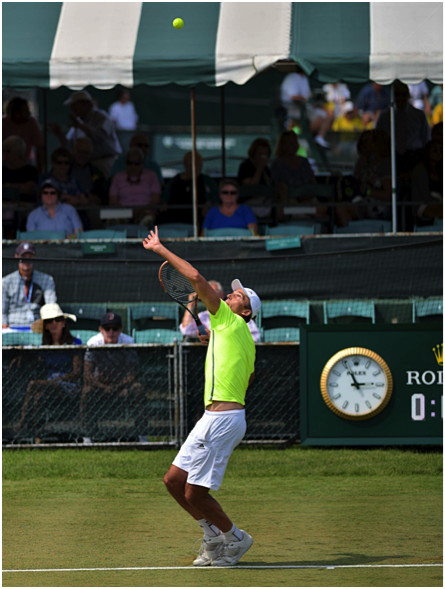 I cannot know which of these three toss approaches would suit your serve. However whatever toss you use must allow for consistency and appropriate timing with respect to striking the ball at the moment of contact. More often than not, players who seem to have powerful, flat serves will opt for the higher toss. I would recommend that you experiment with different tosses to discover which is actually the most likely to provide you with power. Service motions need to have good body and shoulder rotation to help increase power. These coupled with a deep knee bend are the components in the "kinetic chain" that can add more umph to anyone's serve regardless of toss or a person's height. Karlovic does add shoulder and body rotation in addition to a knee bend to his flat serve. In this shot below, you can see that Ivo's knees are bent; his body and shoulder are turned so that his back is facing the net a bit. (Please note that he still has his hand wide open on the handle of his racquet at this point in his service motion.) A good and powerful service motion will always have this "coiled tension" quality to it. 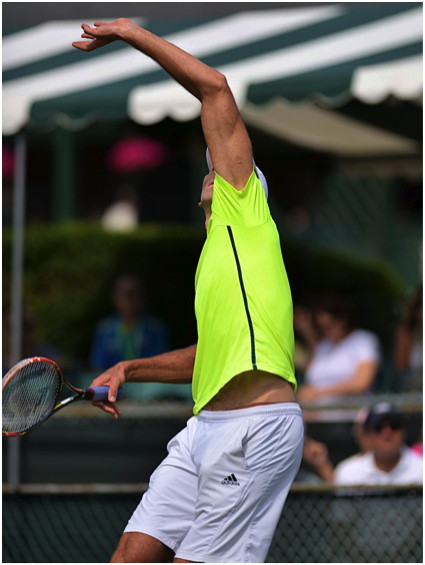 Generally, a player will need to move her/his rear foot forward as the service motion unfolds. Most modern players will bring the two feet together to form what is often called the pedestal position. In a pedestal serve, the two feet are probably touching each other and the server is up on her/his toes as she/he reaches up to serve. Gael Monfils is a modern tour player who conspicuously uses the pedestal serve. As you can see in the image above, Ivo Karlovic is also one who forms a pedestal with his feet during his service motion. Here is an image that shows Ivo's pedestal foot positioning. (Note that in this part of his service motion, Ivo has closed his hand around the racquet handle.) His grip is not all that tight at this juncture. He is on his toes, and his feet are actually touching. Note the tension in his quads (thighs) as he uses his legs to propel him upward and forward. 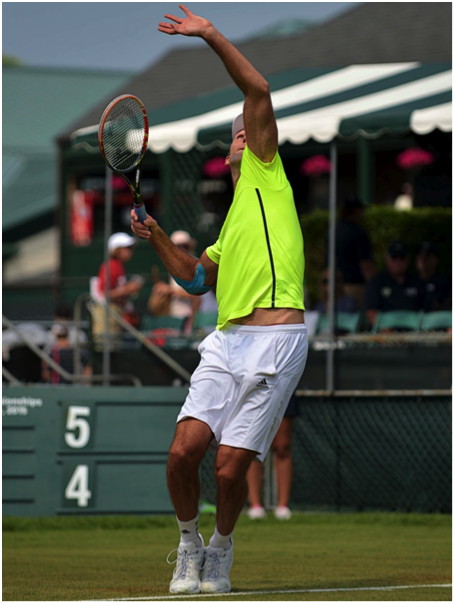 A great benefit to the pedestal serve is that it provides a really good "launching pad" for upward movement. Many pros on both tours will actually go "airborne" and jump off the surface when making contact with the ball on the serve. This has two distinct advantages. First, the legs come into play more, and their catapulting of the body upward and forward imparts more energy into the serve. Second, the serve's contact point is higher. So, a somewhat smaller player can actually make contact with the ball at a location that is very similar to that of a taller player. The higher the contact point, the more likely it is that the ball will clear the net and land deep in the service box... it is all in the angles. In addition to being 6 feet 10 inches tall, Karlovic does go airborne in his serves. This elevates his contact point even more and enables him to really get his "body" into his serves. He certainly does not go up as high as some players, but every little bit helps! Here are a couple images that show Ivo moving up to go airborne in his serve. 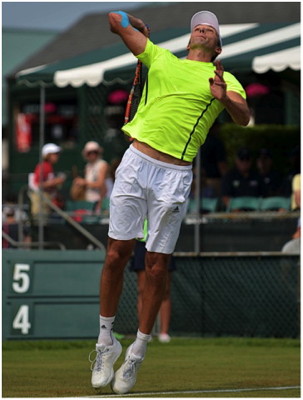
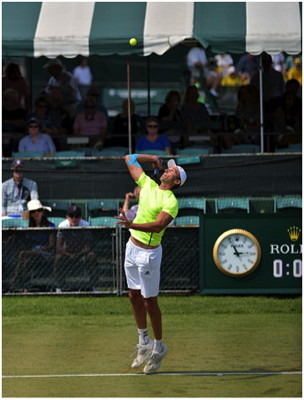 Apart from going airborne, in both of the images above, you can see that Karlovic is actually pointing the butt of his racquet handle at the ball, as he moves up to make contact. I strongly recommend that this technique be incorporated into your flat serve. This will bring more of the upper arm muscles into the equation (particularly the triceps) without having to deliberately "muscle" the serve. The net consequence is an increase in racquet head speed. This racquet head speed is synonymous with increased "power." A good cue to help you use the upper arms and shoulders effectively is to think of attempting to hit the ball with the racquet head frame. By this, I mean point the butt of the racquet handle at the ball... then pretend that you want to hit the ball using the frame of the racquet head as if you were wanting to "cut" the ball into two halves. Think of the racquet as a hatchet. How would you reach up and cut the ball in two? This kind of racquet motion allows for a very fast racquet head motion. Not to worry!!! You will naturally pronate your arm as you are about to make contact. The idea is to accelerate the racquet head's movement and speed until the very last moment. Then, you pronate (turn the face) to make contact with the ball off the strings. In this shot, you can clearly see that Ivo is pointing the butt of his racquet handle at the ball as he moves his racquet up to strike the ball. Imagine for a second that the racquet is a hatchet and the ball is going to be cut in half. Or, imagine that the racquet is a hammer and the ball is a nail. These are the types of motion that you want until you pronate the racquet head to hit the ball on the strings. 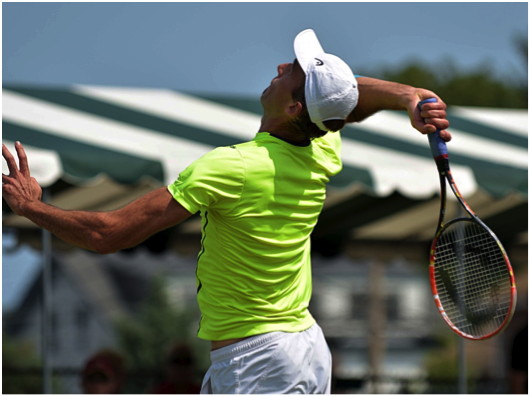 Pronation is where the server twists his arm to allow the strings to make contact with the ball rather than the racquet frame. We do this naturally when we serve. If we didn't, we would be hitting every serve off the frame and not off of the strings. For right handed players, pronation is similar to "unscrewing a light bulb." For lefties, it is the opposite turn or twist. Exaggerating the pronation in your serve is another way to increase power. The more pronation, the more power in your serve. In the following image, we can see several important components. The image shows Ivo a fraction of a second after making contact with the ball during a serve. First, he is airborne. He is about 5 to 6 inches off the ground and was elevated at this level when actually striking the ball. Second, notice how pronated his arm is. The racquet face is actually facing outward to his right. Ivo exaggerates his pronation when he serves. This exaggeration helps him get a bit more power into his big, flat serves. Lastly, you will note that Ivo is inside the baseline. When he lands, he will be about a foot to a foot and a half inside the baseline. This is evidence of his "forward" body movement while serving. 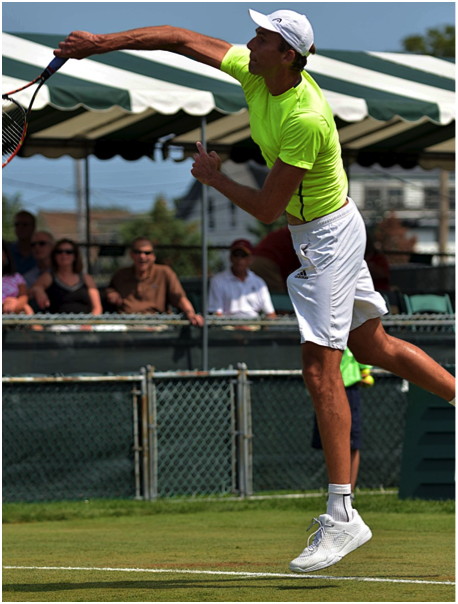 Karlovic is a serve/volley player... especially when competing on grass. Once he lands, he will move forward to close the net. I am a little surprised that his forward motion in his serves doesn't take him even farther into the court. It would seem to me that every step closer to the net he may gain off of his serve is one less step that he needs to take in closing the net to volley. Every stroke in this wonderful game of ours needs a complete and proper follow through or finish. This is true with flat serves as well. Generally, the best flat serves finish with the racquet coming across the player's body and ending with the racquet head on the non-dominant side of the body. Ivo finishes his flat serve in just this manner. He lands on his front foot, the body weight is moving forward, and the racquet has moved completely across the front of his body and finishes on his left side. You can see all of these elements in the image below. 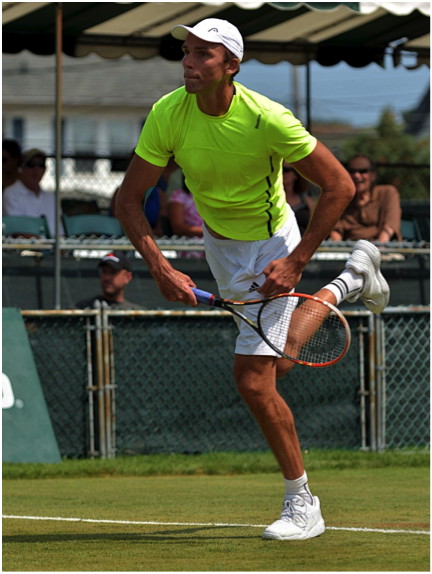 So, let's take a look at a series of images of Ivo Karlovic serving to put all of these components together. I have deliberately made each of the following images large. My hope is that you may printout one or more of these images and use them to "visualize" or model Ivo's service "components" in your own service motion. As I stated earlier in this column, video analysis of your own service motion coupled with a bit of "trial and error" will yield results that may astound you. In truth, I was amazed at the power, consistency and placement of Ivo Karlovic's serves!!! He used the same serve for both first and second serves in the matches that I photographed. However, he was very crafty with respect to his second serves' placements. On second serves, he always did one of two things: He would hit a big, flat serve to the opponent's weaker wing OR he would jam the opponent with a big, flat serve directed at the opponent's body. I am not sure that any of my readers will master the flat serve as well as Ivo, but I am sure that you can add some miles per hour to your first serves by modeling his technique. If you do, you will certainly become a tennis overdog! 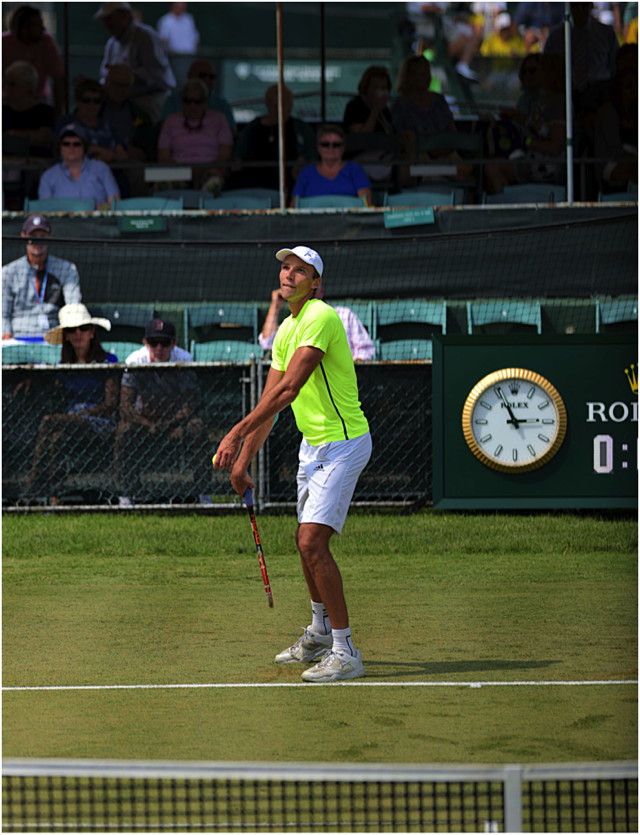 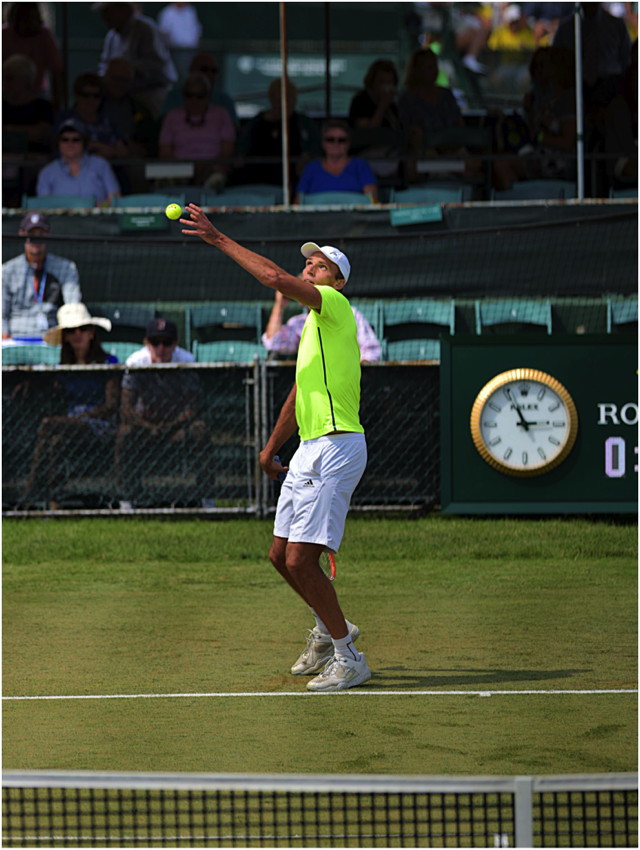 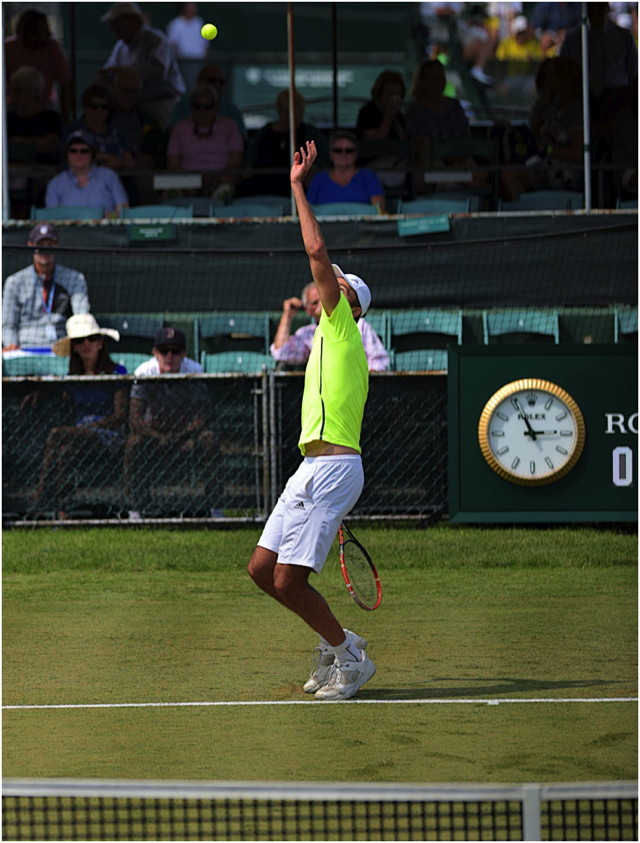 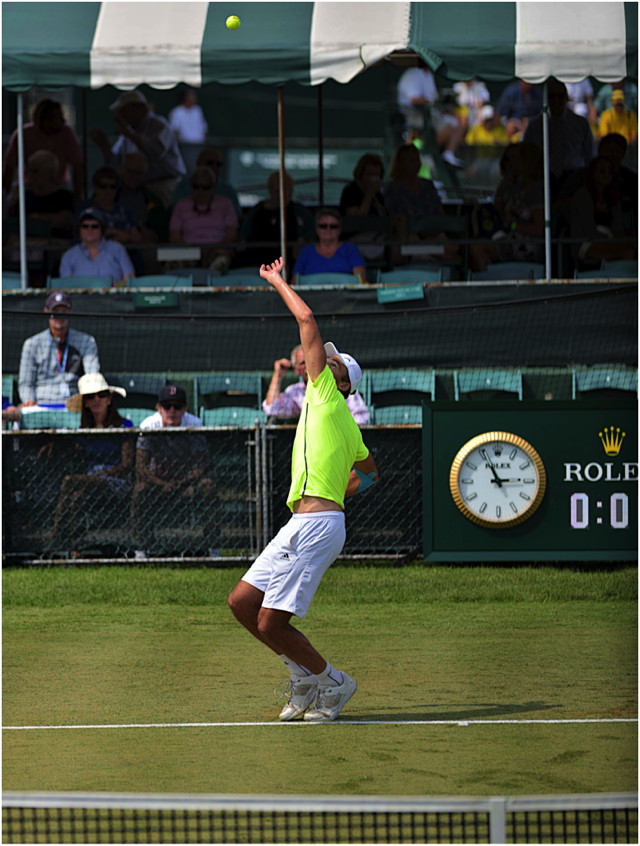 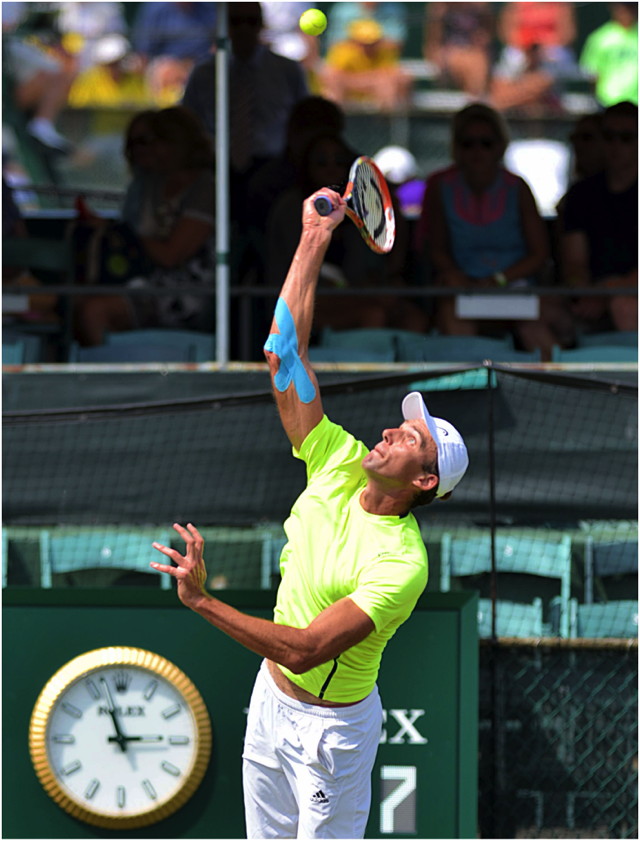 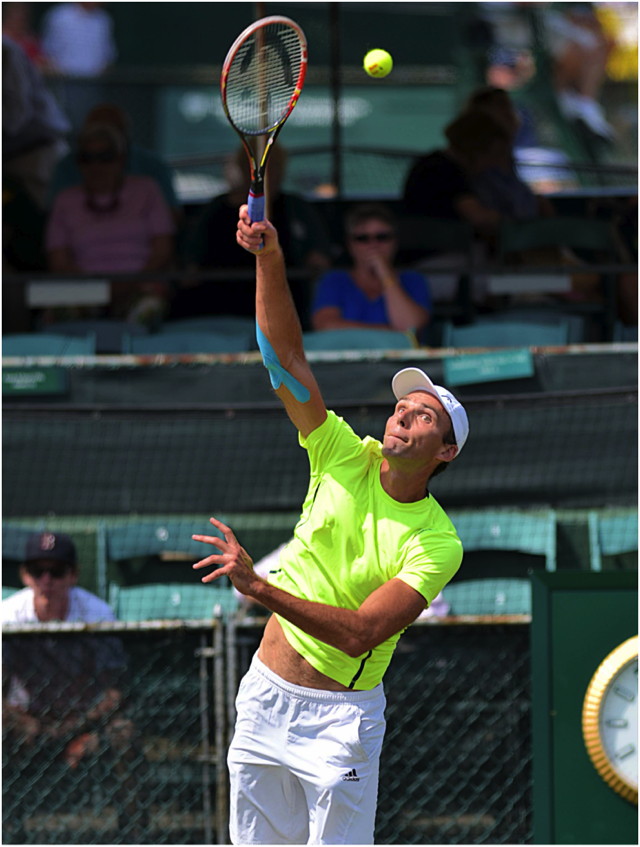 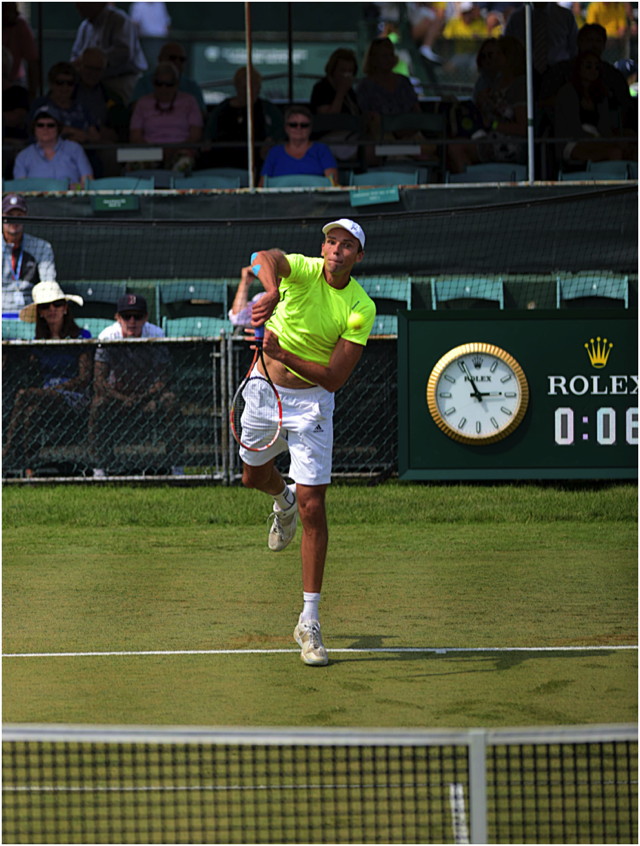 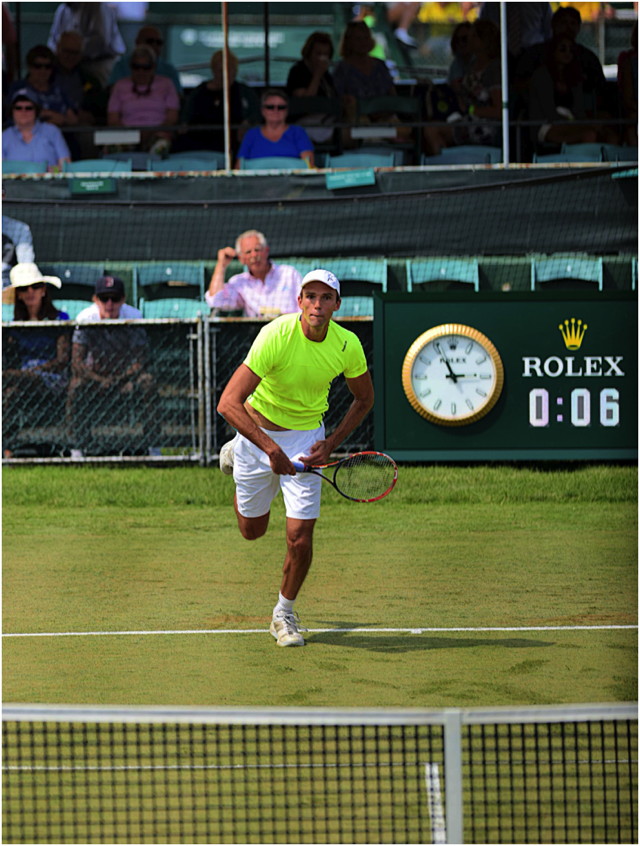
1996 - 2002 | 2003 - Present
This column
is copyrighted by Ron Waite, all rights reserved. Questions and comments
about these columns can be directed to Ron by using this form.
Ron Waite is a certified USPTR tennis instructor who took up the game
of tennis at the age of 39. Frustrated with conventional tennis methods
of instruction and the confusing data available on how to learn the
game, Ron has sought to sift fact from fiction. In his seven years of
tennis, Ron has received USTA sectional ranking four years, has successfully
coached several NCAA Division III men's and women's tennis teams to
post season competition, and has competed in USTA National singles tournaments.
Ron has trained at a number of tennis academies and with many of the
game's leading instructors.
In addition to his full-time work as a professor at Albertus Magnus
College, Ron photographs ATP tour events for a variety of organizations
and publications. The name of his column, TurboTennis, stems from his
methods to decrease the amount of time it takes to learn and master
the game of tennis.
|



October 2022 Tennis Anyone: Patterns in Doubles by John Mills. September 2022 Tennis Anyone: Short Court by John Mills. |
 You will join 13,000 other subscribers in receiving news of updates to the Tennis Server along with monthly tennis tips from tennis pro Tom Veneziano.
You will join 13,000 other subscribers in receiving news of updates to the Tennis Server along with monthly tennis tips from tennis pro Tom Veneziano. 
